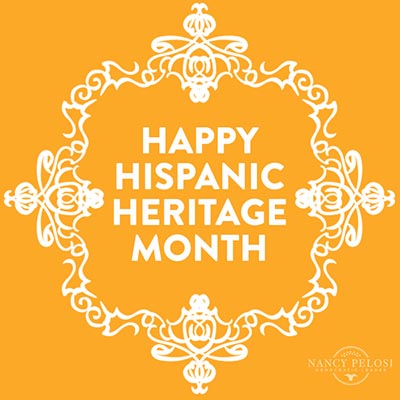
Happy Hispanic Heritage Month!
Today, in celebration of National Hispanic Heritage Month (September 15-October 15), we bring you a compilation of some of our favorite past posts from the Spanish-speaking world. Happy reading! (read more...)

Today, in celebration of National Hispanic Heritage Month (September 15-October 15), we bring you a compilation of some of our favorite past posts from the Spanish-speaking world. Happy reading! (read more...)
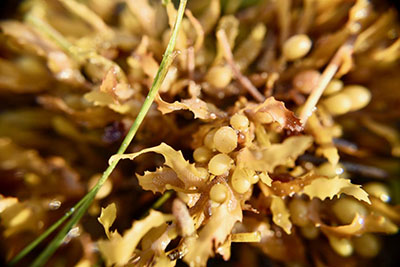
Sitting in her office, I could smell the sharp scent of hydrogen sulfide coming from the beach. She turned to me, paused for a second and proceeded to say with a seriousness in her tone that I hadn’t anticipated: The ecosystem that I have been studying all my life is now disappearing in a matter of weeks. Sargasso was once confined to the limits of the Sargasso Sea in the Atlantic Ocean. As an ecological system, the Sargasso Sea has no land boundaries and its biological containment relies entirely on a delicate balance of ocean currents. Unlike other ecosystems, it lends itself to an almost poetic reimagination of what an ecosystem is. On the West, the sea bounded by Gulf Stream; on the North, by the North Atlantic Current; on East by the Canary Current; and on the South by the North Equatorial Current. It was first described by Cristopher Columbus in 1492 during his journey to the Americas. Ever since, its origins and movements across the Atlantic Ocean have been a source of debate and wonder. It wasn’t until 1834 that the German botanist Meyen F. J. F. proposed the idea that sargassum was an ecosystem entirely independent of any land, a floating ecosystem. He was also the first person who suggested that sargassum reproduces itself in the middle of the ocean instead of coming from any given territory (Deacon, 1942). (read more...)
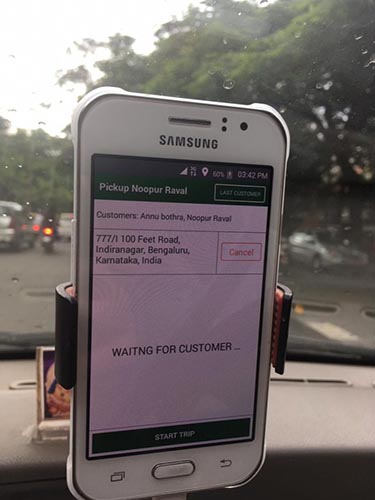
This roundtable discussion marks the end of our series on India’s Gig-work Economy. In this discussion, we reflect on methods, challenges, inter-subjectivities and possible future directions for research on the topic. Here are some highlights from the discussion. Listen to the audio track below or read the transcript for the full discussion Anushree (researcher, taxi-driving in Mumbai): “Something that came out during field work was the flow of workers from traditional services to app-based services which kind of happened in phases and all these platforms have played a different function in the history of this. While the radio taxis were more important in teaching workers to become professionals in the service economy the new platforms have given them a larger customer base and hired access to audience.” (read more...)

The headline on the local news station’s website was sensational: “Bereaved Family Upset Kaiser Used Robot to Tell Father He Would Die”. Evoking some sort of post-modern dystopia, the article explains that the family “was taken by surprise when a robot rolled into the room” to deliver the news that an elder family member’s illness had progressed past the physician’s ability to treat it. While the robot actually was a remote physician using teleconferencing software to communicate with the patient and his family, the monitor projecting an image of the physician’s head and shoulders sat atop a tall, narrow metal unit reminiscent of a body. The “robot doctor” story was picked up by national news outlets, like the New York Times, and medical ethicists weighed in on the ethics of communicating “sensitive” topics remotely. The news stories problematized the impersonal, almost routinized, care as it was perceived by the family. In one, a representative from the American Medical Association commented, “We should all remember the power of touch – simple human contact – can communicate caring better than words.” (read more...)
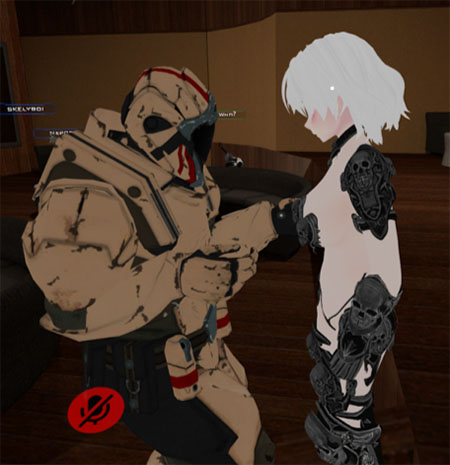
Content warning from author: This post will have instances of sexism, transphobia, and sexual violence. I noticed a masculine voice near me say: “wow Wow WOW!” I turned my body to see a couple of masculine avatars looking at me, or rather looking at my breasts. I said nothing, afraid I might be “found out” — that my voice wouldn’t quite match what the body of my avatar “should” have. As my avatar stood there, blinking in silence, one of the masculine avatars got closer and began to rub my body, taking particular interest in my breasts. I looked down and shared eye contact with him, and he said “Don’t worry. It’s ok, it’s VRChat. This is what happens. You won’t really feel anything anyway.” The others did the same. (read more...)
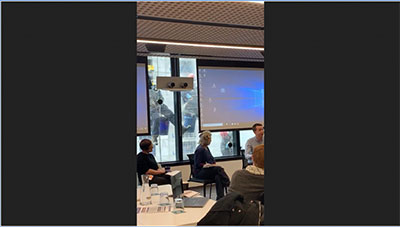
As the presenter encouraged the academics in the room to consider what it means for nanotechnology to sell itself as ‘magic’, boots appeared outside the window behind him. The presenter was Dr. Declan Kuch from the University of NSW and the occasion was the AusSTS Graduate Workshop, which was held on the 12th floor of Deakin Downtown in Melbourne. The provocation Dr. Kuch presented: ‘who performs the magic and for whom?’, was illuminated by the real time, situated magical performance unfolding behind him, as four high-rise window washers descended, each swiping and cleaning in hypnotic choreography. They wore orange helmets and gloves to keep warm, blue buckets clipped to their belts and bandanas protecting their faces from the water, or perhaps from us, as we smiled and pointed and ogled at their daring feats. It was an STS moment: the physicality of the window washers; the labour/danger dynamic; talk of magic and nanotechnology—science and humanities colliding in a discomforting dance. (read more...)
Vodka-tonic. Take my picture. Charge my phone. Vodka-tonic. Take my picture. Charge my phone. This (or a similar sequence) is an irritatingly common refrain heard by many waitstaff at lower-tier upper-class Instagram-approved destination restaurants in New York City—presumably other variations proliferate throughout the world’s urban centers. While vodka and digital reproduction make fruitful grist for social critique, the focus of the following is on the request to infuse one’s portable appendage with fresh electricity. There are a number of intriguing aspects of this “charging culture,” from its role in the resource consumption chain (Parikka 2015), to infrastructural adaptations appearing in charging societies (Larkin 2013), to the implications of portable appliances on mobility studies (Schiller 2011), to the novel linguistic interactions engendered by electronic communications (Squires 2010). In concert with these developments, the following discusses the metabolism of charging culture—that is, the processes that are necessary for the maintenance of life. (read more...)
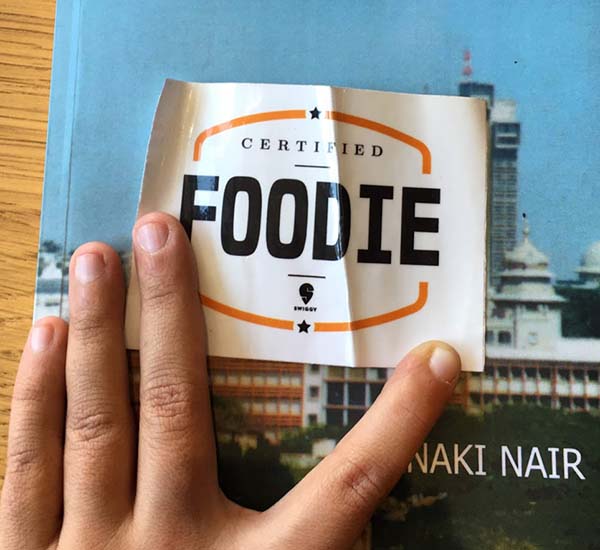
*A note from Co-PI Noopur Raval: The arrival and rise of gig-work globally has ushered in a new wave of conversations around the casualization of labor and the precarious nature of digitally-mediated “gigs,” ranging from online crowdwork gigs to digitally-mediated physical work such as Ubering. Gradually, scholarship has extended beyond North America and Europe to map the landscape of digital labor in the global south. These posts that make up “India’s Gig-Work Economy” are the result of one such project titled ‘Mapping Digital Labour in India,’ where four research fellows and a program manager, me, have been studying the dynamics of app-based ridehailing and food-delivery work in two Indian cities (Mumbai and New Delhi). This project is supported by the Azim Premji University’s Research Grants program. In this series of posts, the research fellows and I offer reflections on pleasure, surveillance, morality and other aspects woven into the sociality of gig-work and consumption in India. Each post also has an accompanying audio piece in an Indian language, in a bid to reach out to non-academic and non-English speaking audiences. The series ends with a roundtable discussion post on the challenges, gender and class dynamics, and ethics of researching gig-work(ers) in India.* **A note from the editor: This post was co-written with Rajendra Jadhav. Download a transcript of the audio in Devanagari. This post presents the observations around the design of temporality within app-based food-delivery platforms in India. It draws on semi-structured interviews by field-researcher Rajendra and his time spent “hanging out” with food-delivery workers who are also often referred to as “hunger saviors” and “partners” in the platform ecosystem in India. Like in the earlier post by Simiran on food-delivery workers in Mumbai, we also observed that app-based work was structured and monitored along similar lines. However, in this post, we go into a detailed description of how work-time and temporality of work are configured in order to fulfill the promises that app companies make to customers in urban India. (read more...)